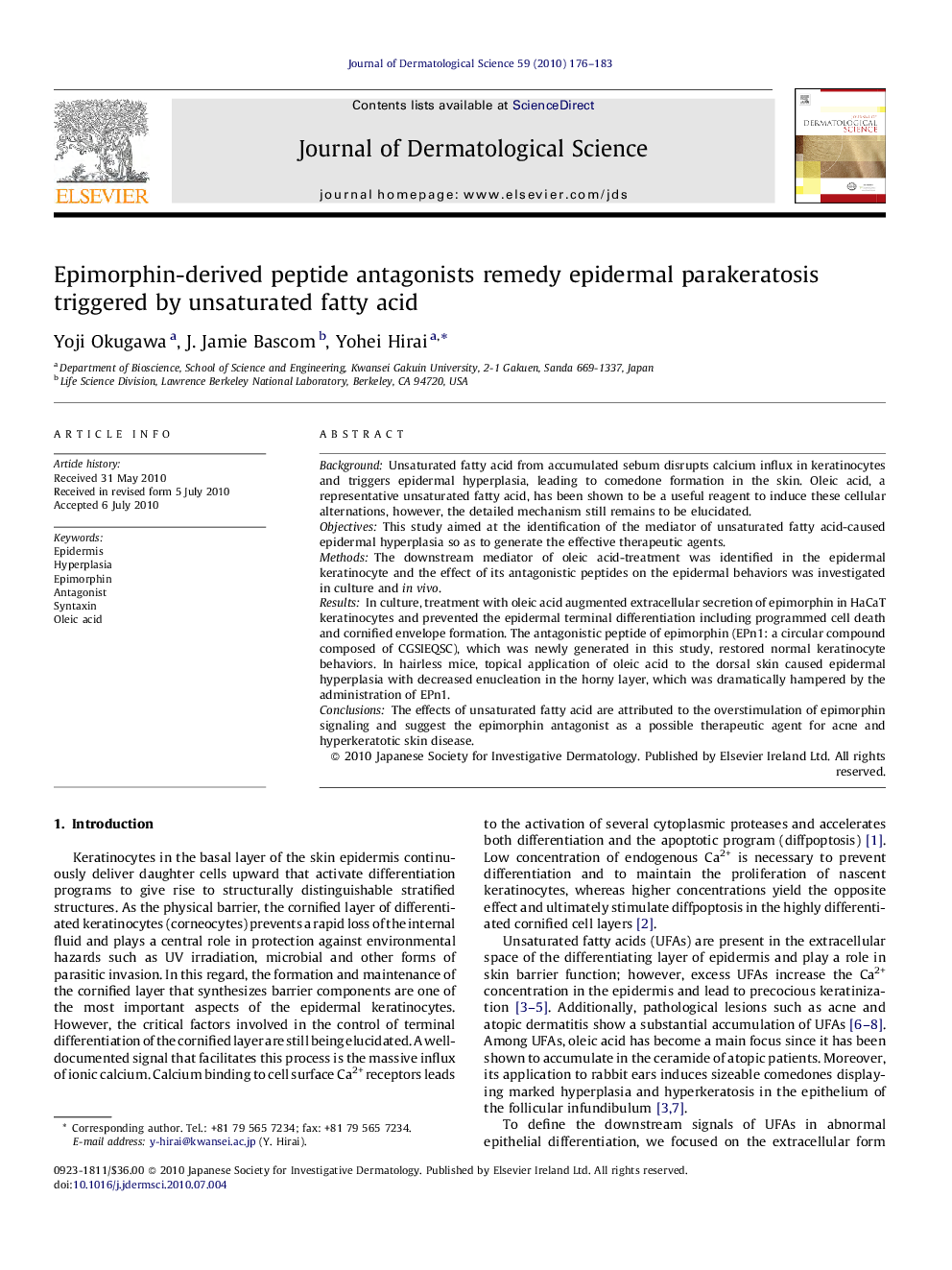| کد مقاله | کد نشریه | سال انتشار | مقاله انگلیسی | نسخه تمام متن |
|---|---|---|---|---|
| 3213676 | 1203246 | 2010 | 8 صفحه PDF | دانلود رایگان |

BackgroundUnsaturated fatty acid from accumulated sebum disrupts calcium influx in keratinocytes and triggers epidermal hyperplasia, leading to comedone formation in the skin. Oleic acid, a representative unsaturated fatty acid, has been shown to be a useful reagent to induce these cellular alternations, however, the detailed mechanism still remains to be elucidated.ObjectivesThis study aimed at the identification of the mediator of unsaturated fatty acid-caused epidermal hyperplasia so as to generate the effective therapeutic agents.MethodsThe downstream mediator of oleic acid-treatment was identified in the epidermal keratinocyte and the effect of its antagonistic peptides on the epidermal behaviors was investigated in culture and in vivo.ResultsIn culture, treatment with oleic acid augmented extracellular secretion of epimorphin in HaCaT keratinocytes and prevented the epidermal terminal differentiation including programmed cell death and cornified envelope formation. The antagonistic peptide of epimorphin (EPn1: a circular compound composed of CGSIEQSC), which was newly generated in this study, restored normal keratinocyte behaviors. In hairless mice, topical application of oleic acid to the dorsal skin caused epidermal hyperplasia with decreased enucleation in the horny layer, which was dramatically hampered by the administration of EPn1.ConclusionsThe effects of unsaturated fatty acid are attributed to the overstimulation of epimorphin signaling and suggest the epimorphin antagonist as a possible therapeutic agent for acne and hyperkeratotic skin disease.
Journal: Journal of Dermatological Science - Volume 59, Issue 3, September 2010, Pages 176–183